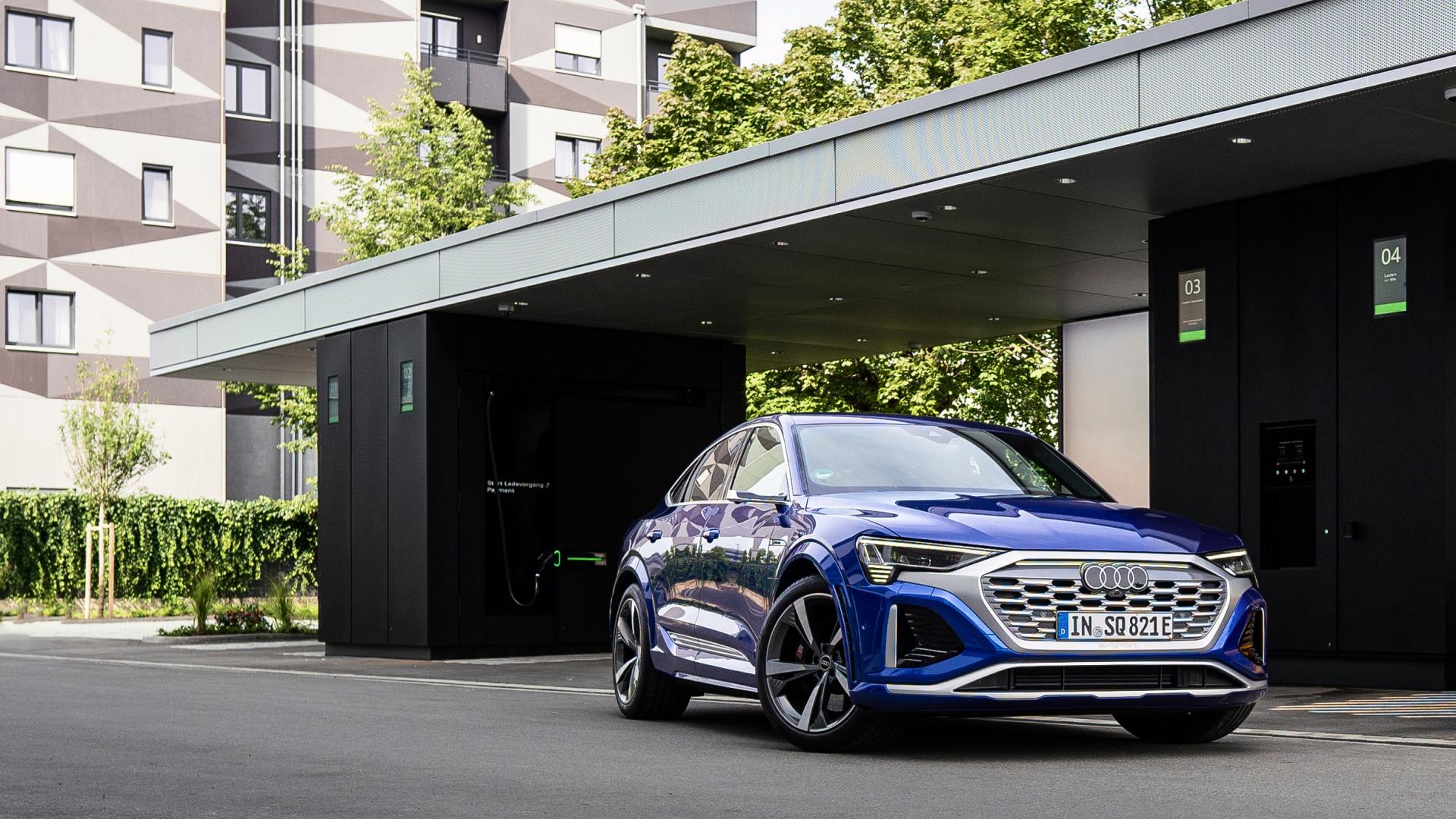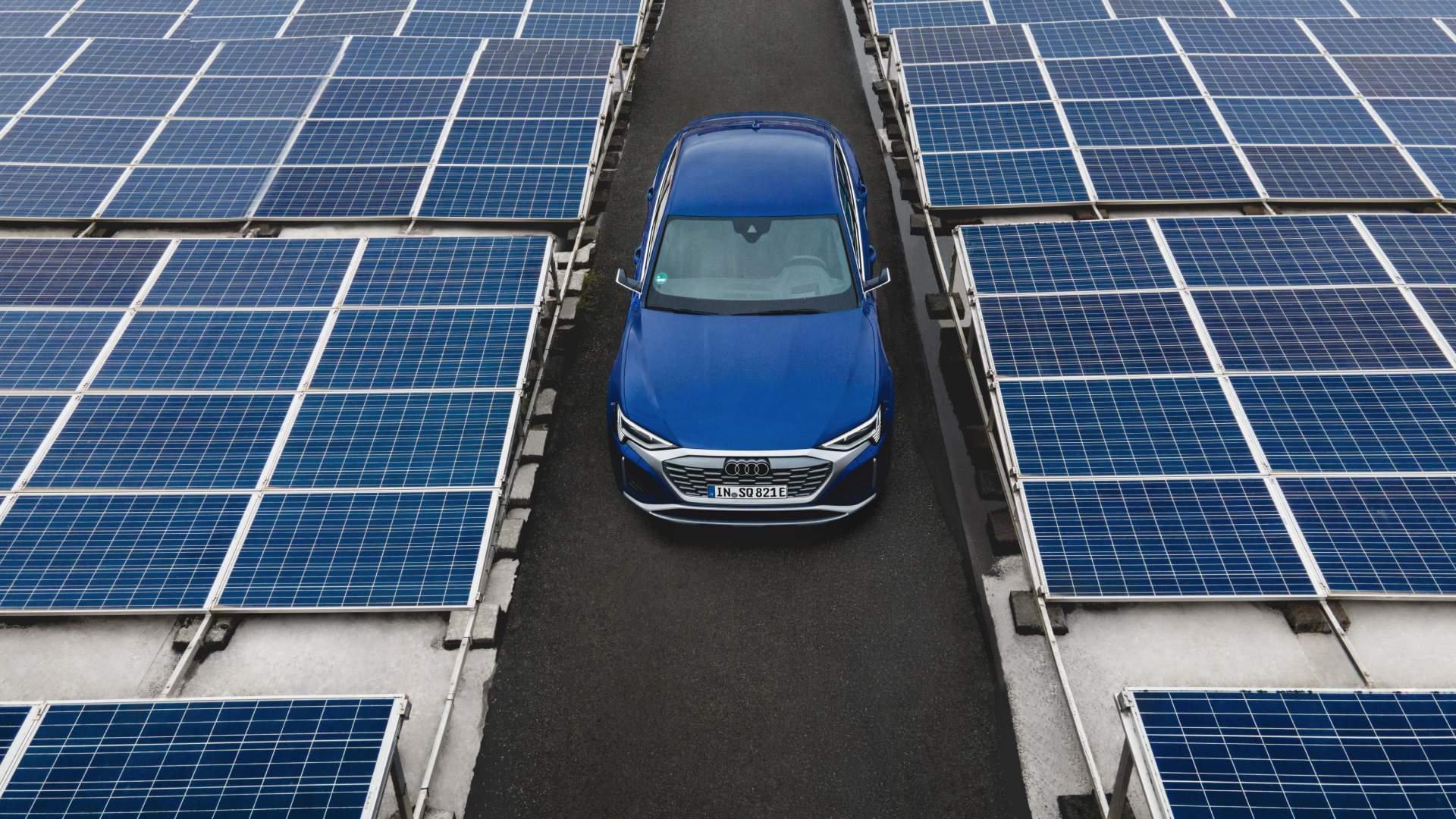The Audi Q4 e-tron stands for sustainability without compromising on quality and design. Learn more about the fully electric Audi vehicle and its sustainability ambitions.
A holistic approach
We cannot have premium mobility without sustainability – that is Audi's commitment. Experts like Dr Johanna Klewitz and Malte Vömel take a close look at supply chains and products and drive the transformation towards a more sustainable premium brand.
Only consumption and emission values according to WLTP and not according to NEDC are available for the vehicle.

Audi is committed to the Paris Agreement on Climate Change and aims for a carbon-neutral balance sheet for its vehicles along the entire value chain by 2050. The medium-term goal is to reduce the carbon footprint per vehicle model by 40 percent by 2030. Dr Johanna Klewitz and Malte Vömel, together with their teams and many other experts, are working on a holistic sustainability concept to ensure that these ambitious goals are met.
Audi is committed to the Paris Agreement on Climate Change and aims for a carbon-neutral balance sheet for its vehicles along the entire value chain by 2050. The medium-term goal is to reduce the carbon footprint per vehicle model by 40 percent by 2030. Dr Johanna Klewitz and Malte Vömel, together with their teams and many other experts, are working on a holistic sustainability concept to ensure that these ambitious goals are met.
The Audi Q4 e-tron passes the entrance to a futuristic-looking, cube-shaped, two-story building. A car park is set around the Audi charging hub in Nuremberg. Charging points for electric vehicles are organised at six locations, forming a plane surface with the deep black, metallic facade of the building.
The Audi Q4 e-tron stops at charging point 1. Dr Johanna Klewitz, Head of Supply Chain Sustainability at Audi, gets out and connects the charging plug to the vehicle. Already on site: her colleague Malte Vömel, Project Consultant for Decarbonisation Strategy. It's no coincidence that the two meet in the Audi charging hub, because they are organising Audi's transformation towards a more sustainable mobility provider in their respective departments. And the hub is a place that conveys many important contents of the sustainability strategy. Launched as a pilot project, further Audi charging hubs are already being implemented in Germany and Europe. Customers can reserve high-power charging (HPC) points with green electricity in advance and spend their waiting time in the approximately 150 square meter premium lounge area
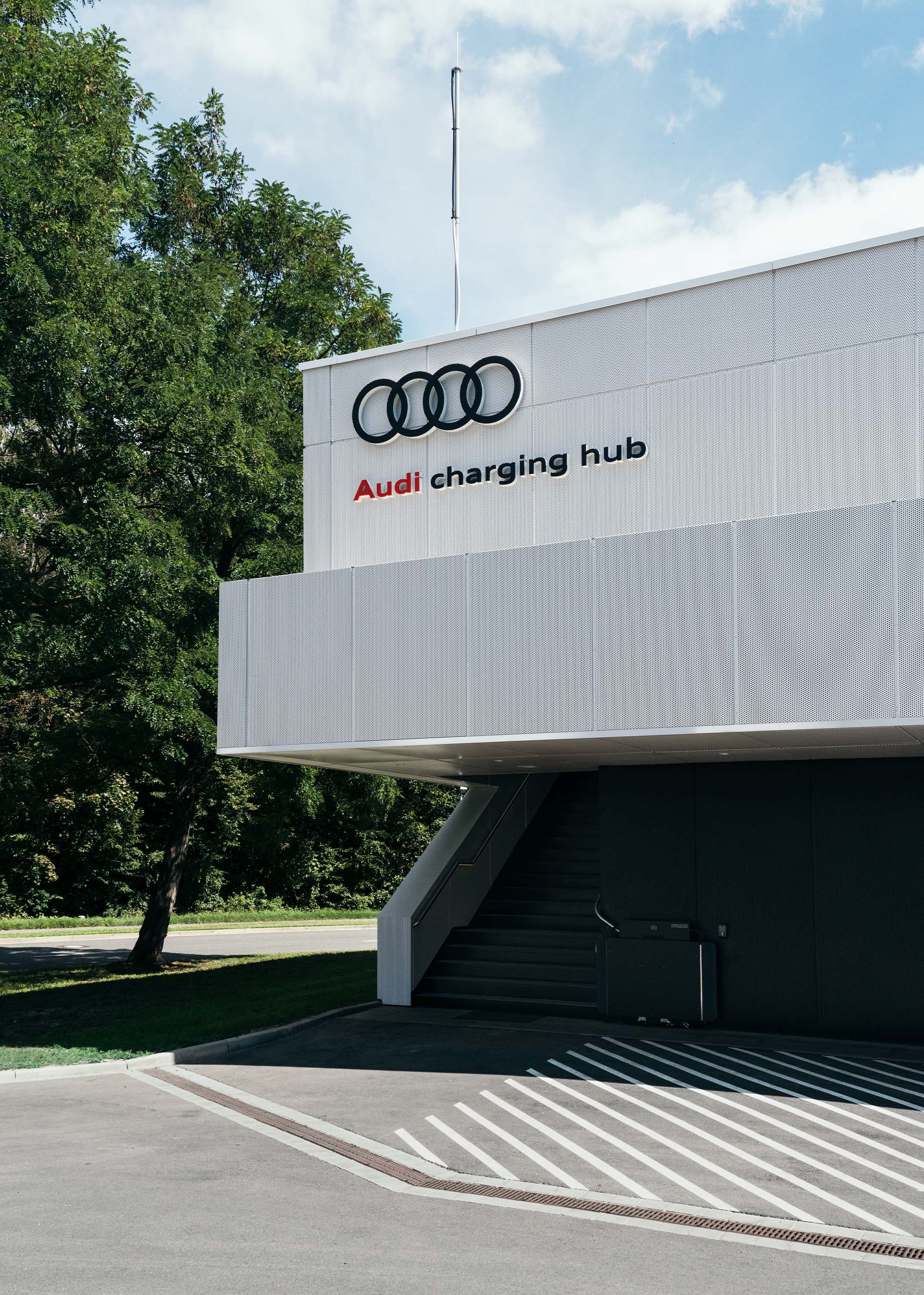
Customers charging their electric vehicles at the hub can enjoy coffee and snacks inside the lounge. They can also experience the brand's sustainability agenda up close on touchscreens.
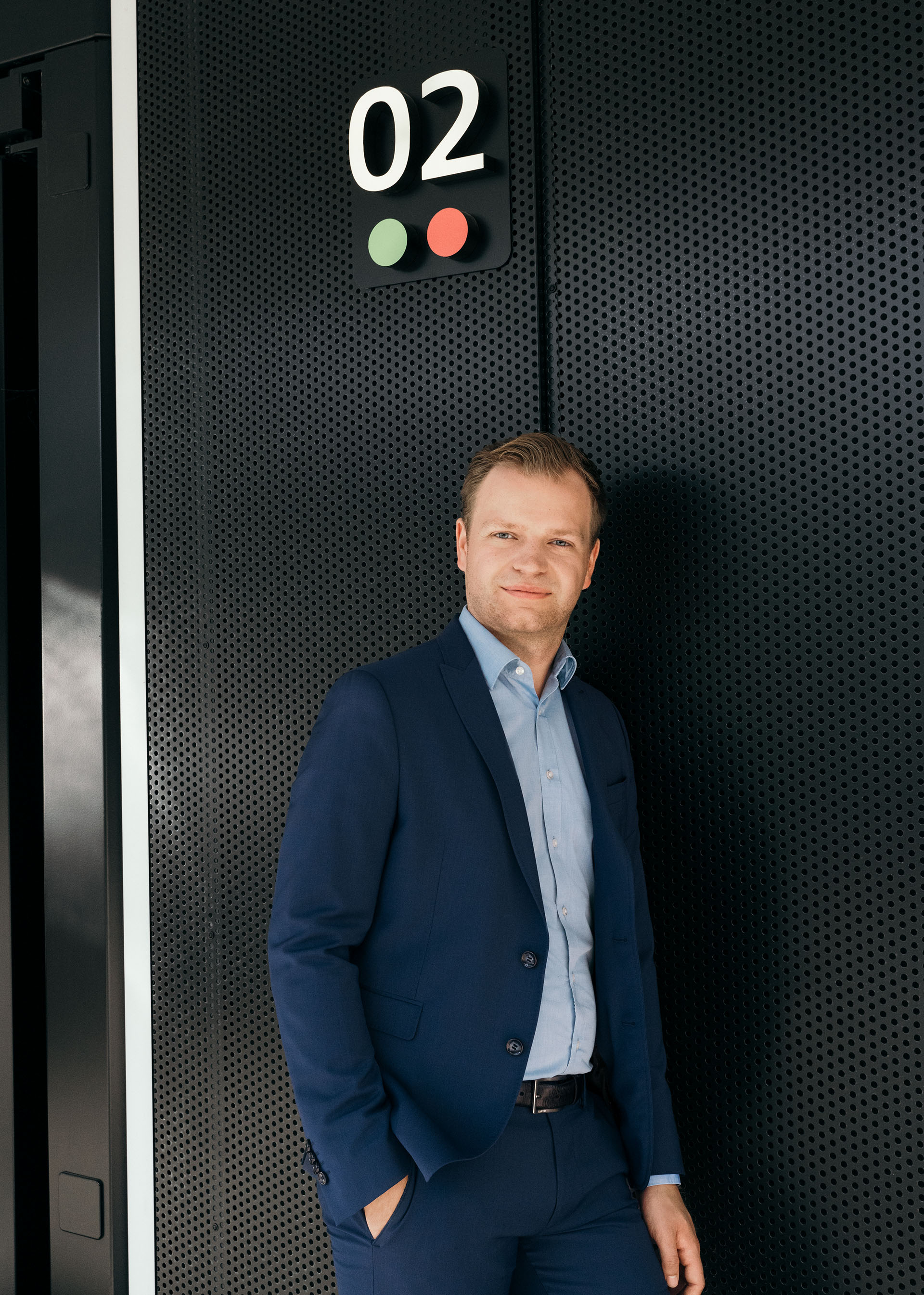
Malte Vömel, Project Consultant for Decarbonisation Strategy at Audi, sees the hub as one of many approaches to making the brand and its products sustainable along their life cycle.
Customers charging their electric vehicles at the hub can enjoy coffee and snacks inside the lounge. They can also experience the brand's sustainability agenda up close on touchscreens.
Malte Vömel, Project Consultant for Decarbonisation Strategy at Audi, sees the hub as one of many approaches to making the brand and its products sustainable along their life cycle.
Binding for all partner companies
"In procurement, sustainability is important. That is why Audi's procurement organisation has firmly implemented the topic of sustainability in its strategy and activities. My team is tasked with bringing about positive results for people and the environment," says Dr Klewitz, who joined Audi Procurement in 2016 and now works with a team of experts to develop and implement programmes, measures and initiatives for more sustainable supply chains. At Audi, this involves more than 14,000 partner companies of various sizes in more than 60 countries.
Their work is based on three pillars. The main focus is on people – Audi defines clear standards for working conditions for suppliers. Another pillar is innovation. Technological achievements such as AI help to better track activities and measures in the supply chains. Environment forms the third pillar. "Audi already launched a carbon programme in the supply chain in 2018 for closed-loop systems, more recycled content and greater use of green energy. My team and I also set up a sustainability rating that is binding for all partners. This involves standards such as occupational safety or environmental protection measures. A positive sustainability rating is a prerequisite for companies to receive orders from Audi," says Dr Klewitz.
And this is also where the tasks for Dr Klewitz's team arise: "We focus on a transparent communication of the requirements and also on empowering the suppliers. To this end, we rely on collaboration formats, but also on training courses, which are bundled and can be viewed in our S-Rating Info Hub, for example.

Dr Johanna Klewitz, Head of Supply Chain Sustainability at Audi, and her team and interface partners, work on carbon savings potentials along the supply chain for supplier companies worldwide.
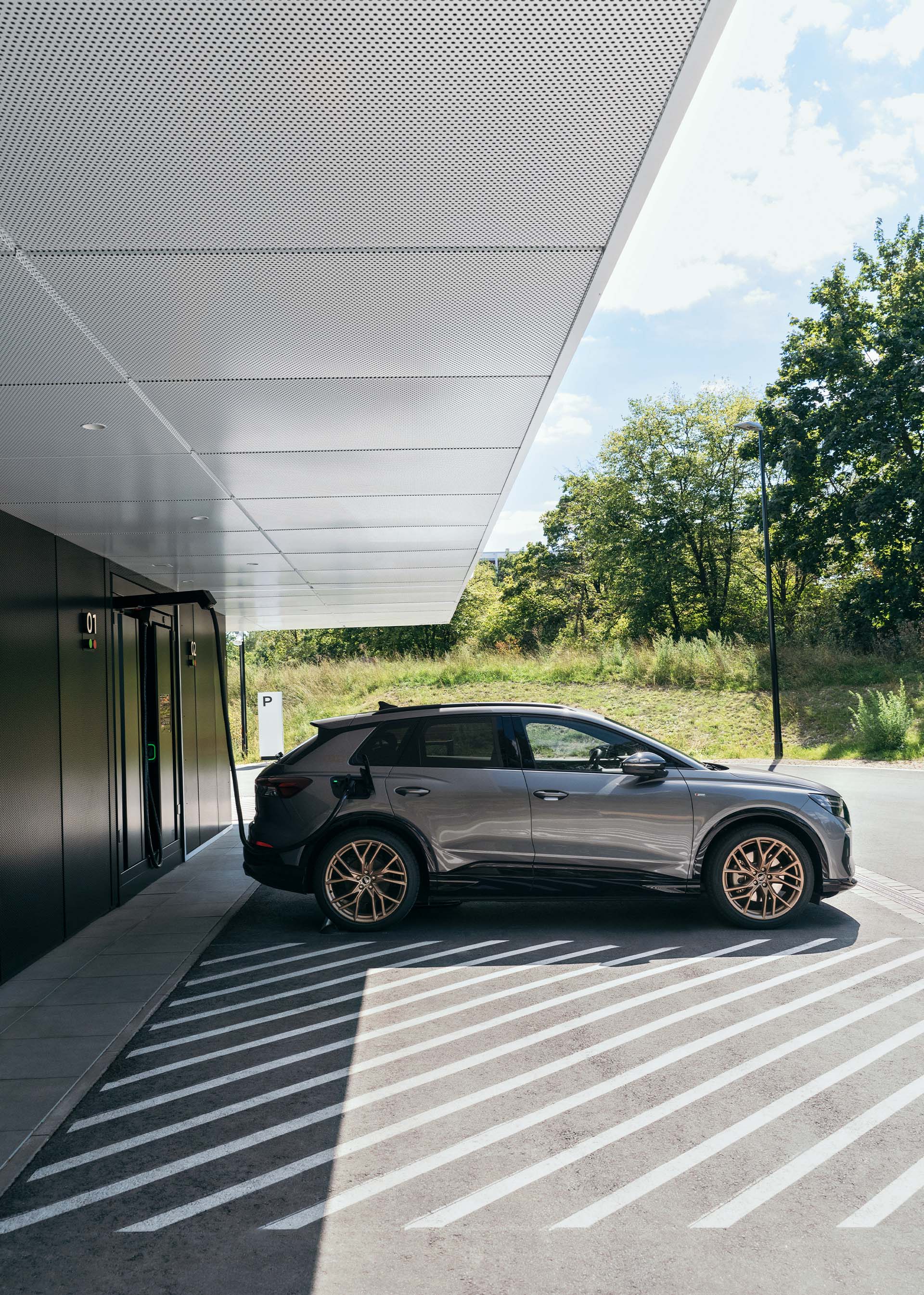
And in the Audi Q4 e-tron, the first savings potential can be identified in terms of primary materials: Inside the vehicle, there are 27 components with a recycled content. The seat covers, for example, are made from PET bottles.
Dr Johanna Klewitz, Head of Supply Chain Sustainability at Audi, and her team and interface partners, work on carbon savings potentials along the supply chain for supplier companies worldwide.
And in the Audi Q4 e-tron, the first savings potential can be identified in terms of primary materials: Inside the vehicle, there are 27 components with a recycled content. The seat covers, for example, are made from PET bottles.
Set on sustainability
"In the Audi charging hub, customers charging their cars will experience our strategy most vividly: We not only provide high-quality and efficient electric vehicles, but we also think about the charging infrastructure and the provision of renewable energies," explains Malte Vömel, who has been focusing on sustainability in the product strategy at Audi since 2019.At Audi, all lifecycle phases of the products are put to the test and recorded with the decarbonisation index (DKI). Audi uses the DKI to balance and manage carbon emissions along the entire automotive value chain. Vömel describes the underlying lifecycle analysis as follows: "In the supply chain, carbon emissions are determined with the help of life-cycle analyses of Audi vehicle models. At our production sites, we can map carbon emissions based on the respective energy requirements. When driving, carbon emissions are calculated with respect to the consumption of the vehicles over their service life. When it comes to electric vehicles, we’re talking about electricity consumption. So, at the end of the day, we know what the life-cycle analysis of a vehicle like the Audi Q4 e-tron looks like from its creation to the end of its use."
“My job is to implement our carbon targets over the life cycle and right from the initial product idea.”
Malte Vömel

Life-cycle analysis involves all areas. Starting with the supply chain, where Dr Johanna Klewitz's and Malte Vömel's areas of work meet, through the vehicle's service life to the recycling phase, when old vehicle components are reused in the production of new components.
Life-cycle analysis involves all areas. Starting with the supply chain, where Dr Johanna Klewitz's and Malte Vömel's areas of work meet, through the vehicle's service life to the recycling phase, when old vehicle components are reused in the production of new components.
Great potential for savings
Particularly in procurement, Audi has set itself ambitious goals to improve its sustainability performance and decarbonisation effect. Dr Klewitz sees the greatest savings potential in this area: "The supply chain is burdened with carbon emissions from electromobility due to the immanent, energy- and material-intensive battery production. It’s our priority to counteract in terms of the decarbonisation index and to effectively reduce emissions. We focus on identifying primary materials that can be replaced by secondary materials. The use of secondary aluminium, for example, saves up to 95 percent of energy as opposed to primary aluminium. But this is only one possibility. We also focus on recycling materials and reducing resources used in the production."
The use of an electric vehicle such as the Audi Q4 e-tron represents the other half of carbon emissions over its life cycle and is therefore just as relevant as the supply chain. Malte Vömel shows that the Group and Audi have recognised the importance of energy procurement, storage and provision: "The Ionity charging network already provides electricity from renewable energies within the public network of fast charging stations. The Volkswagen Group subsidiary Elli offers options for purchasing electricity from renewable energies for charging at home. However, green electricity is not available for all charging processes. To this end, Audi is cooperating with energy producers to promote the expansion of renewable energies. As part of these collaborations, new wind and solar farms are being built across Europe with the objective of feeding more than five terawatt hours into the grid by 2025."

Dr Johanna Klewitz and Malte Vömel are looking for new options to cut emissions. One way is to improve the charging infrastructure and increase the supply of green electricity for electric vehicles.
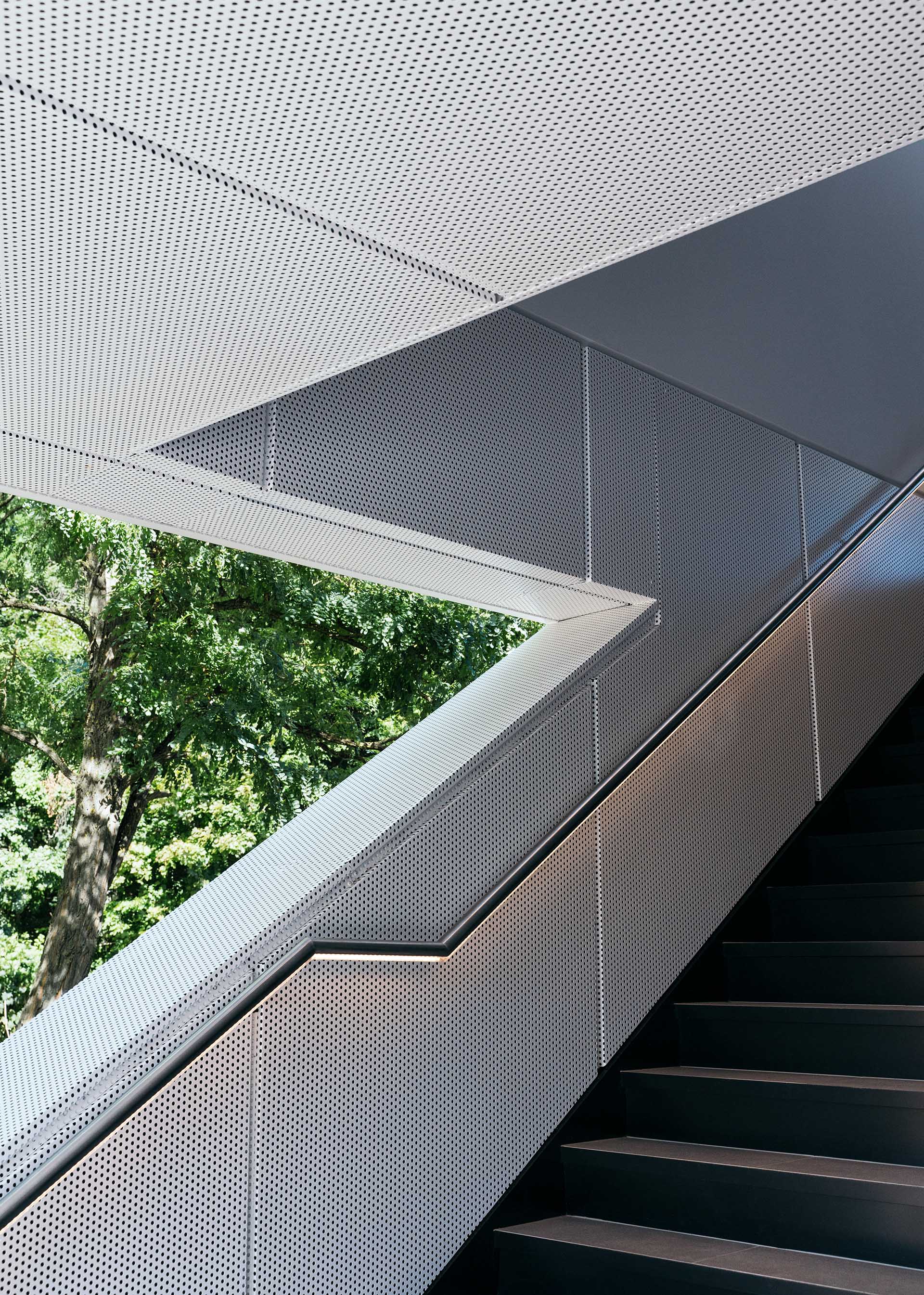
One example of this endeavour is the Audi charging hub, where second-life batteries allow the temporary storage of green electricity from the grid and from solar modules at the charging points.
Dr Johanna Klewitz and Malte Vömel are looking for new options to cut emissions. One way is to improve the charging infrastructure and increase the supply of green electricity for electric vehicles.
One example of this endeavour is the Audi charging hub, where second-life batteries allow the temporary storage of green electricity from the grid and from solar modules at the charging points.
“Key levers are closed-loop recycling and clear requirements to improve the sustainability performance of partner companies.”
Dr. Johanna Klewitz
Finally, the Audi charging hub is proof of the effort. Vehicles that are charged here draw their electricity from so-called power cubes, where the electricity is stored in second-life batteries. "Vehicles from Audi's technical development are not simply discarded but dismantled into their component parts. Their battery units become part of a second-life programme," explains Vömel. Electric vehicles are only just establishing themselves on the mass market, and many of them are currently only at the beginning of their utilisation cycle. In the near future, a large number of batteries are not expected to have reached the end of their service life in electric vehicles. Vömel sees a medium-term development here: "From the next decade, we expect a large wave of vehicles that can be fed into the recycling process. The goal must be to have offers for further use and recycling of the batteries by then."
And what role do customers play in the sustainability agenda? Dr Johanna Klewitz points to the people around her in the Audi charging hub: "For all of them, our sustainability strategy is turned into an experience – here they can learn more about what kind of electricity they're actually charging and what materials are built into the vehicle."

Experts in the various business units at Audi contribute to the transformation towards more sustainable premium mobility. For Dr Johanna Klewitz and Malte Vömel, the focus is on teamwork and collaboration with the experts across all businesses.
Experts in the various business units at Audi contribute to the transformation towards more sustainable premium mobility. For Dr Johanna Klewitz and Malte Vömel, the focus is on teamwork and collaboration with the experts across all businesses.

